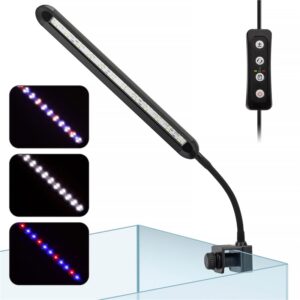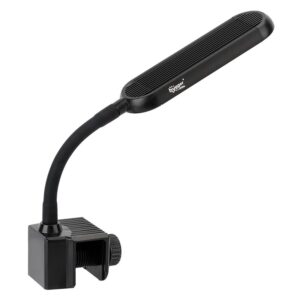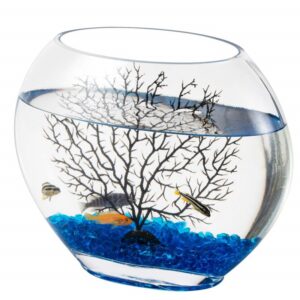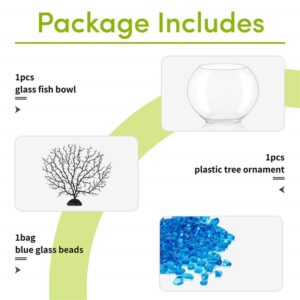Top 10 Best Terrarium Plants to Choose
Terrariums are enclosed glass containers, which create a controlled and self-sustaining ecosystem for plants. And creating a terrarium is a delightful way to bring nature indoors. Being a terrarium beginner or a seasoned enthusiast, it is necessary to choose the right plants. In today’s article, we will share the top 10 best terrarium plants for plant terrarium.
What are terrarium plants
Get to know terrarium plants
Terrarium plants grow and thrive in a terrarium environment. Generally, they are small, low-growing, and adaptable to an enclosed space. When choosing terrarium plants, you need to consider the specific needs of each plant, like light levels, humidity preferences, and growth habits. Some common terrarium plants include ferns, mosses, succulents, air plants, small tropical plants, etc.
Terrarium plant species
In this part, we will cover some popular species of plants commonly used in terrariums.
| Ferns (Various genera) | Fittonia (Fittonia spp.) | Peperomia (Peperomia spp.) |
| Selaginella (Selaginella spp.) | Orchids | Begonia (Begonia spp.) |
| Succulents and Cacti | Air Plants (Tillandsia spp.) | Spider Plant (Chlorophytum comosum) |
| Polka Dot Plant (Hypoestes phyllostachya) | Pilea (Pilea spp.) | Mosses (Various genera) |
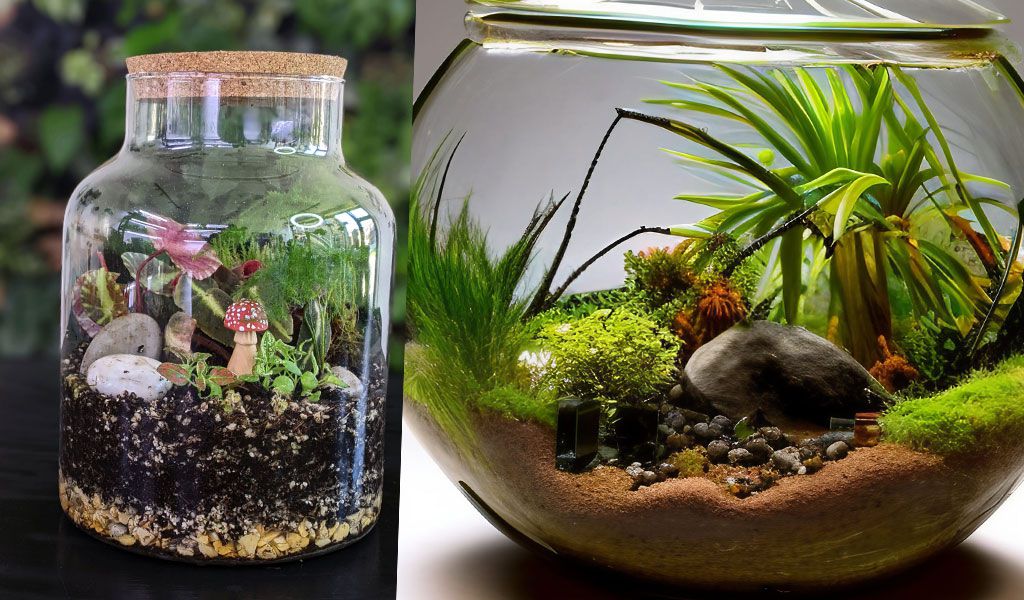
Stunning plant for terrarium
Features of terrarium plants
- Compact size: Terrarium plants are typically small and compact, which allows them to fit and grow well within the limited space of a terrarium. They have a slow growth rate and do not outgrow the container too fast.
- Tolerant of high humidity: Due to the enclosed nature of the container, terrariums create a humid environment. Accordingly, the great ability to tolerate a higher humidity level makes plant terrarium more captivating.
- Low light adaptability: Commonly, terrarium plants thrive in lower light conditions. However, the light level requirements can be varied for different terrarium types.
- Moisture retention: Terrarium plants can retain moisture. They may have waxy or succulent leaves to reduce water loss through evaporation. It allows them to survive and thrive in the humid environment of a terrarium.
- Non-invasive growth habits: The non-invasive growth habits make the roots compact and do not aggressively spread or overtake the container. Consequently, the plants can coexist harmoniously within the limited space of a terrarium. Also, it prevents overcrowding or competition for resources.
Closed terrarium plants
Generally, closed terrariums provide a humid and self-contained environment. Thus, terrarium plants that can thrive in high humidity and lower light conditions are excellent options. Here are some popular plants that are well-suited for closed terrariums:
- Ferns: Many fern species, such as Maidenhair Fern (Adiantum spp.), Button Fern (Pellaea spp.), or Bird’s Nest Fern (Asplenium nidus), are excellent choices for closed terrariums.
- Fittonia (Fittonia spp.): Also known as a nerve plant, Fittonia features colorful and patterned leaves. It thrives in high humidity and lower light conditions, making it ideal for closed terrariums.
- Peperomia (Peperomia spp.): Peperomia varieties are compact and low-growing plants. For example, Watermelon Peperomia (Peperomia argyreia) or Ripple Peperomia (Peperomia caperata).
- Selaginella (Selaginella spp.): Selaginella is also known as spike moss. It is a low-growing plant. And its delicate foliage adds a unique texture to a closed terrarium.
- Miniature Orchids: Certain species of miniature orchids can thrive in closed terrariums, like Phalaenopsis or Paphiopedilum. Generally, they require high humidity and indirect light.
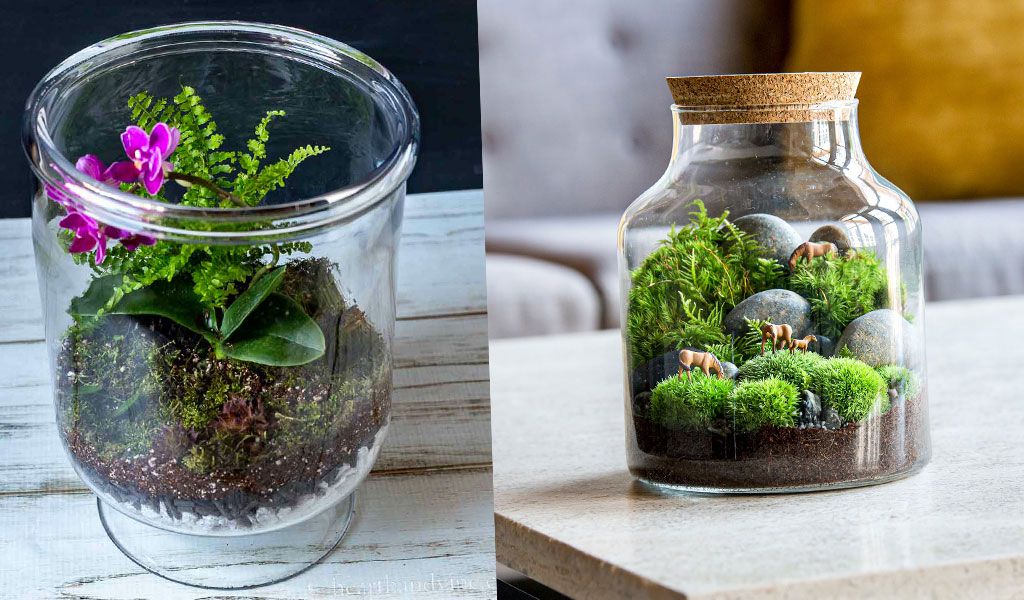
Open terrarium plants
Compared with closed terrariums, open terrariums provide a slightly different environment, which provides more airflow and lower humidity levels. Here are some popular plants that are well-suited for open terrariums:
- Succulents: Succulents are excellent choices for open terrariums because they prefer drier conditions and good airflow. Some popular succulent varieties include Echeveria, Haworthia, Sedum, and Aloe.
- Cacti: Cacti thrive in well-draining soil and prefer drier conditions, making them suitable for open terrariums. There are various types of cacti, each with its unique shape and size.
- Air Plants (Tillandsia spp.): Air plants are epiphytic plants. They don’t require soil. And they can absorb nutrients and moisture from the air. Also, air plants can be directly placed on decorative elements within the open terrarium, such as driftwood or rocks.
- Spider Plant (Chlorophytum comosum): Spider plants are adaptable and perform well in open terrariums. They have arching leaves with white stripes and prefer moderate humidity levels.
- Peperomia (Peperomia spp.): Some peperomia varieties, such as Peperomia obtusifolia or Peperomia caperata, are great choices for open terrariums. They have lush foliage, making them tolerate slightly drier conditions.
- Polka Dot Plant (Hypoestes phyllostachya): The polka dot plant is a colorful option for open terrariums. It has spotted leaves in shades of pink, red, or white.
The 10 best terrarium plants
Terrariums are miniature ecosystems enclosed in glass containers. In this segment, we will share the ten best terrarium plants for terrariums.
| 1. English Ivy (Hedera helix)
It has trailing vines and lush, evergreen leaves. Also, it is a versatile and low-maintenance plant. English Ivy prefers a living environment with low to medium light and moderately moist soil. Also, it helps to purify the air by filtering and removing harmful toxins from the surrounding air. |
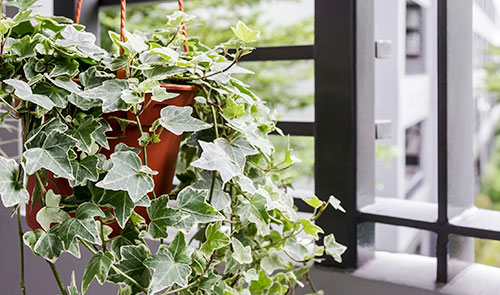 |
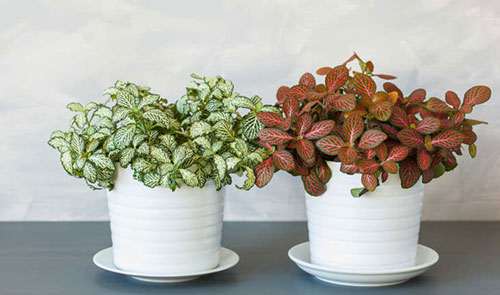 |
2. Fittonia (Fittonia spp.)
Fittonia features intricate veined foliage and strikingly patterned leaves in various vibrant colors, like red, pink, or white. It prefers moist conditions, high humidity, and indirect light. With proper care and attention, Fittonia will thrive and add a touch of natural beauty to your indoor oasis. |
| 3. Pothos (Epipremnum aureum)
Pothos is a hardy and trailing plant, featuring lush foliage. It commonly comes in a variety of leaf colors, including green, variegated, or golden. It can adapt to different light conditions. Plus, it thrives in well-draining soil and prefers to be kept consistently moist but not waterlogged. |
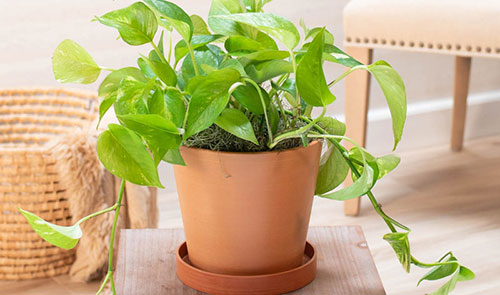 |
 |
4. Baby Tears (Soleirolia soleirolii)
The tiny and round leaves resemble tiny droplets or tears. And the leaves are typically bright green, forming a lush green carpet. Baby Tears is fond of high humidity, moist soil without becoming waterlogged, and bright but indirect light. |
| 5. Spider Plant (Chlorophytum comosum)
Featuring long and arching leaves with white stripes, the spider plant is resilient and adaptable to different light conditions. Also, variegated varieties are available with additional white or yellow stripes. Besides, Spider Plants are relatively low-maintenance. |
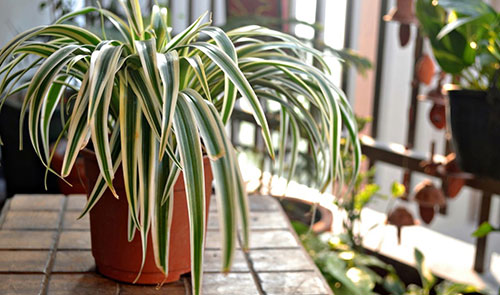 |
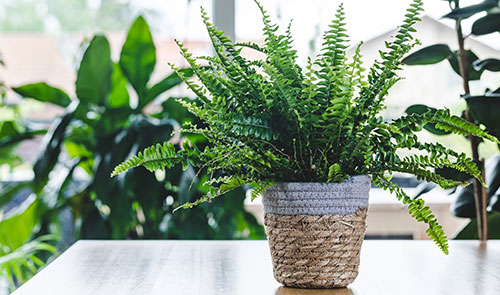 |
6. Ferns (Various genera)
Being famous for feathery or lacy leaves, the available Ferns for terrariums include Maidenhair Fern (Adiantum spp.) Bird’s Nest Fern (Asplenium nidus), etc. Plus, most ferns prefer bright but indirect light and high humidity levels. But you should avoid overwatering. |
| 7. Air Plants (Tillandsia spp.)
Air plants can survive without soil, they absorb nutrients and moisture from the air. They come in various shapes and sizes and can be mounted on driftwood or decorative objects. Commonly, air plants have feathery or spiky leaves and may produce vibrant flowers in various hues. Typically, air plants like high humidity levels, as well as bright but indirect light. |
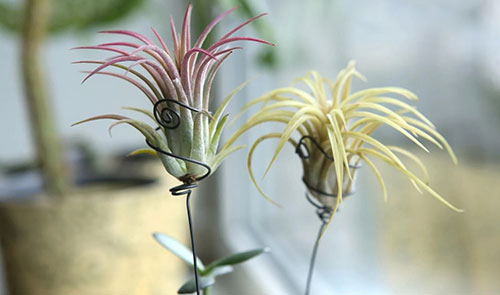 |
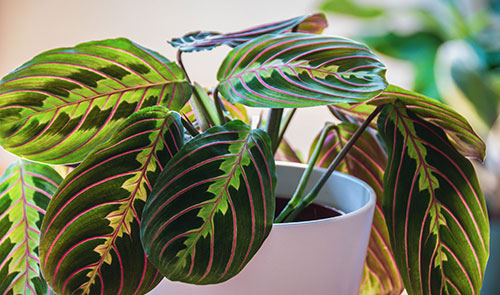 |
8.Prayer Plant ( Maranta leuconeura)
Prayer Plant is known for its vibrant and patterned leaves, which will fold up at night. The leaves usually come in green, red, and cream. Furthermore, the Prayer Plant prefers a humid environment, medium to low light conditions, and a water temperature of 60-80℉ (15-27℃). |
| 9. Peperomia (Peperomia spp.)
With fleshy leaves and compact growth habit, Peperomia varieties are well-suited for terrariums. They come in a range of leaf shapes, sizes, and colors. The attractive foliage, compact size, and relatively low maintenance requirements make them popular choices. |
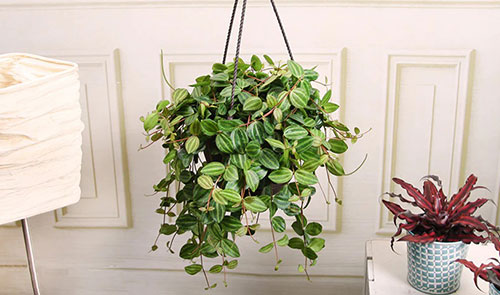 |
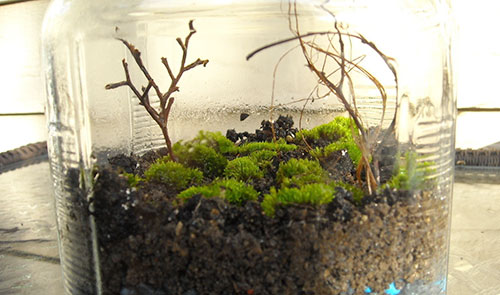 |
10. Mosses
Mosses commonly thrive in high humidity and low light conditions. Adding mosses can create a lush, carpet-like appearance. Sheet Moss (Hypnum spp.), Cushion Moss (Leucobryum spp.), or Java Moss (Taxiphyllum barbieri) are perfect for closed terrariums. |
End of the line
Until now, have you gained a better understanding of terrarium plants? Definitely, the plants can add a touch of natural beauty to your indoor oasis. So, if you are interested in creating one, why not have a try?

